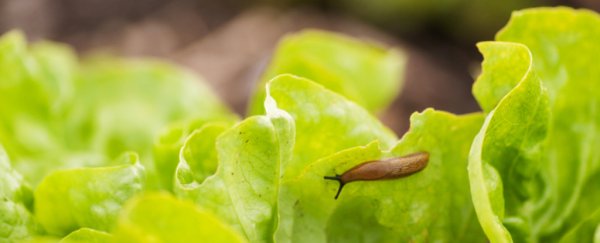Sam Ballard swallowed the slug on a dare. The young rugby player from Sydney was a "larrikin" - a "rough-and-tumble" free spirit, his mother said.
So when the creature crawled across a table at a party in 2010 and his buddies dared him to eat it, her son accepted the challenge, she said.
"Twenty-year-old boys, red wine, alcohol, sitting at some mate's table - a slug goes onto the table, someone banters about a dare," his mother, Katie Ballard, told 7 News Sydney in an interview the following year.
"Boys will be boys," she said.
The dare may have been innocent enough.
But after swallowing the slug, Ballard contracted a rat lungworm - a parasitic worm (Angiostrongylus cantonensis) that lives in rodents and can be passed onto snails and slugs, according to the Centers for Disease Control and Prevention.
Those gastropods can then transmit the worm to humans.
In an unusual and tragic turn, the parasite infested Ballard's brain - putting him into a coma for more than a year and leaving him paralyzed, according to News.com.au. Ultimately, it killed him.
Ballard, 29, died late last week, according to the Sunday Project. His last words to his mother were, "I love you," according to the Australian news show.
Ballard started experiencing severe pain in his legs within days after eating the slug, according to the Sunday Project.
He asked his mother whether it could have been caused by the critter.
"No, no one gets sick from that," his mother said she told him, recalling the incident in an interview earlier this year.
But his doctors soon discovered that he had gotten sick from the slug.
"He was scared," his mother told the Sunday Project.
"So, you know, as a mom, all you want to do is reassure them. As far as I'm concerned, he didn't do anything wrong. It was just a silly thing."
Ballard, whose mother said he once seemed "invincible," became quadriplegic.
For years, he suffered from seizures, was forced to eat and breathe through tubes and required constant care, which the family struggled to pay for, according to the Daily Telegraph.
In 2011, Katie Ballard wrote on Facebook that her son was "still the same cheeeeeeeekkkyyy Sam" and that she believed he would talk and walk again.
The Sunday Project's Lisa Wilkinson wrote in a column Monday that for nearly nine years, "Sam's beautiful angel of a mum Katie has been right by Sam's side as his chief carer, never wavering in her love; feeding him, wheeling him, driving him, getting him bathed and toileted, organising doctor and hospital visits, always trying to find the lighter moments so she could see her boy smile again, waking at every sound in the night, always making sure Sam's friends felt welcomed in his new, limited world. When they visited, as they did often, Sam's eyes would always light up."
"And Katie was always, always optimistic for what the future held for him."
Now, Ballard is dead.
The parasitic worm Angiostrongylus cantonensis lives inside rodents' lungs.
As the CDC explained in a video, the rodent - typically a rat - coughs up the worms and then swallows them, forcing them into the animal's stomach. Eventually, the rat excretes the worms.
Snails or slugs can become infected by eating the rat's feces, according to the CDC, and people can become infected by eating the snails or slugs.
People can get infected by eating raw or undercooked snails or slugs that are infected with this parasite. In some cultures, snails are commonly eaten.
Some children, in particular, have gotten infected by swallowing snails/slugs "on a dare". People also can get infected by accident, by eating raw produce (such as lettuce) that contains a small snail or slug or part of one.
Certain animals such freshwater shrimp, crabs, or frogs, have been found to be infected with larvae of the parasite.
It is possible that eating undercooked or raw animals that are infected could result in people becoming infected, though the evidence for this is not as clear as for eating infected snails and slugs. Of note, fish do not spread this parasite.
Cases have been reported in Hawaii, as well as in the continental United States, according to the CDC. A New Orleans boy contracted the parasite in 1993 by eating a snail "on a dare", according to the agency, but did not need treatment.
Australian health officials have called it "an extremely rare infection".
The New South Wales Ministry of Health said in a fact sheet that most people who contract it do not experience any symptoms; when they do, the symptoms are usually temporary and mild, the health agency said.
Very rarely, rat lung worm causes an infection (infestation) of the brain called eosinophilic meningo-encephalitis. People with this condition may have headaches, a stiff neck, tingling or pain in the skin, fever, nausea, and vomiting.
The time between eating the slug or snail and getting sick is usually 1-3 weeks.
Anyone with these symptoms should seek medical assessment although other infections (such as meningococcal disease or pneumococcal disease) are much more likely causes of meningitis in children.
Health officials warn people not to eat raw snails or slugs and to thoroughly wash fruits and vegetables and inspect them for the slimy creatures.
2018 © The Washington Post
This article was originally published by The Washington Post.
